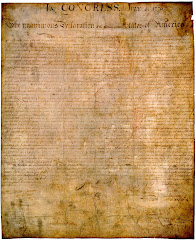
Days earlier I had travelled through the same tunnel on my way by train from Venice to Naples. A few days later, I would travel through the same tunnel on my way to Florence. Had my schedule been different, I may well have found myself a victim of the attack.
I became aware of the event through the lurid artist's reconstructions on the covers of Italian news magazines outside newsagents on Rome's Corso Vittorio Emanuele.
I was seventeen at the time.
On August 2, 1980, a bomb was planted in the waiting room of the Bologna railway station: 84 died and some 200 were injured. The act was ascribed to neo-Fascists.

A few weeks later, while travelling with a friend around Italy by train we passed through Bologna and noted the gap where the waiting room had been.
In March, 1982, I began to live and work in Italy. In the June of that year, the body of Italian banker, Roberto Calviwas found hanging from a noose under Blackfriars Bridge, London. In the next few years, the name of Banco Ambrosiano, the Propaganda Due (P2) Masonic Lodge, and Licio Gelli would become familiar.
In the winter of 1984/85, I was working in Pistoia, Tuscany, and I lived in a mansard directly under the rafters on the top floor of the medieval Casa del Capitano del Popolo (House of the Captain of the People). (See picture below.)

Shortly before Christmas, 1984, I travelled through the San Benedetto Val di Sambro tunnel where, ten years earlier, there had been a bomb explosion, on my way from Florence to Bologna and from Bologna to Padua to stay with the family of an Italian friend who lived in a house in the Veneto countryside, before flying from Treviso airport to London's Gatwick airport.
In the January 7, 1985, edition of Time Magazine, the article, "Italy Tunnel of Death", appeared. It began:
Stretching for 11 1/2 miles beneath central Italy's rugged Apennine mountains, it is one of Europe's longest railway tunnels and carries the nickname La Direttissima because it provides the most direct route between Florence and Bologna. Last week the Italian press renamed it the "Tunnel of Death."
Two days before Christmas, Train 904, an express bound from Naples to Milan with 700 holiday passengers aboard, was roaring through La Direttissima at 90 m.p.h. when a time bomb exploded in a second-class carriage. The force of the blast blew in the double-paned windows in most of the train's 14 cars. Antonio Algieri, 33, one of those wounded by the flying glass, described the scene as "a hurricane of slivers--and then so much terrible screaming in the dark." The train came to a stop, and thick smoke billowed through the tunnel, initially frustrating rescue attempts as dazed passengers stumbled around in the blackness.
When rescue teams eventually reached the wreckage, they found that the ninth car of the train had been demolished by the blast; at least 15 people were found dead and 80 were seriously injured. It was Italy's bloodiest terrorist act since the authorities began to gain the upper hand in the fight against political extremists two years ago.
Within hours, a number of outlawed groups of both the left and the right claimed responsibility for the blast. Official suspicion centered on neo- Fascist terrorists, since the Christmas attack took place in the same tunnel in which right-wing extremists bombed a train in 1974, killing twelve and wounding 48. In 1980 neo-Fascists planted a bomb in the waiting room of the Bologna railway station: 84 died and some 200 were injured.
I had travelled through this very tunnel only days before this second bomb attack.
After flying back to Italy, I returned by the same route to my mansard in Pistoia's Casa del Capitano del Popolo.
As the couple above whose flat I lived were out and I couldn't get in, a doctor who lived in a flat below theirs invited me in for a drink and a chat. Naturally, the conversation revolved around the recent bombing, and my own lucky escapes, both in 1974 and a few weeks earlier.
It was then that I became aware of the view, quite commonly held by all classes of people in Italy, including respectable middle class doctors, that the Italian government were somehow behind these attacks.
Over the next few years, the words Operazione Gladio (Operation Gladio), and strategia di tensione (strategy of tension), became increasingly familiar as these were increasingly talked about in the Italian press. These topics are too complicated to deal with in one article. But I leave the reader with a few links and the first of a three-part BBC programme on Operation Gladio.
And with one final thought. When, in 1990, Italian Prime Minister, Giulio Andreotti, revealed the existence of Gladio (though he denied that it had anything to do with the bombings described above), then president of Italy, Francesco Cossiga, who had been involved in setting Gladio up, felt honor-bound to resign.
More recently, Senator Cossiga, who clearly has a deep roots in his country's intelligence service, has stated, in an interview with leading Italian newspaper, Il Corriere della Sera: "It is common knowledge amongst global intelligence agencies that 9/11 was an inside job."
Operation Gladio: NATO Terrorists pt 1 of 15
part 2
part 3
part 4
part 5
part 6
part 7
part 8
part 9
part 10
part 11
part 12
part 13
part 14
part 15






